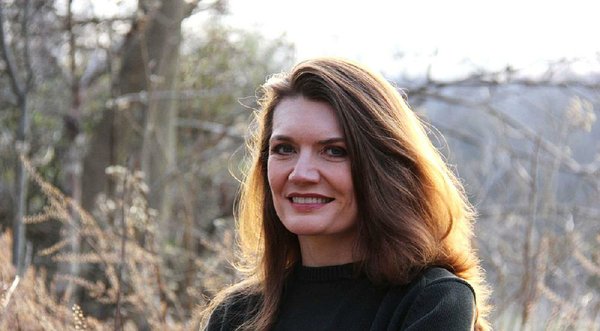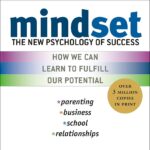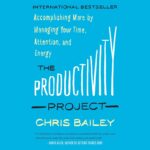
If you have ever found yourself asking, “How can someone rise from a childhood of chaos, poverty, and neglect to build a successful, fulfilling life?” then The Glass Castle summary is exactly the story you’ve been searching for. This memoir by Jeannette Walls doesn’t just list events from her past—it takes you by the hand and walks you through moments of wonder, heartbreak, resilience, and transformation.
From the very first page, Walls invites you into her world—a world where dreams are as fragile and beautiful as glass, and survival demands a kind of strength many people never have to imagine. What makes this story powerful isn’t only the struggle; it’s the way Walls frames her experiences with honesty, nuance, and even humor.
THE BELOVED #1 NEW YORK TIMES BESTSELLER—FROM THE AUTHOR OF HANG THE MOON
The extraordinary, one-of-a-kind, “nothing short of spectacular” (Entertainment Weekly) memoir from one of the world’s most gifted storytellers.
The Glass Castle is a remarkable memoir of resilience and redemption, and a revelatory look into a family at once deeply dysfunctional and uniquely vibrant. When sober, Jeannette’s brilliant and charismatic father captured his children’s imagination, teaching them physics, geology, and how to embrace life fearlessly. But when he drank, he was dishonest and destructive. Her mother was a free spirit who abhorred the idea of domesticity and didn’t want the responsibility of raising a family.
The Walls children learned to take care of themselves. They fed, clothed, and protected one another, and eventually found their way to New York. Their parents followed them, choosing to be homeless even as their children prospered.
The Glass Castle is truly astonishing—a memoir permeated by the intense love of a peculiar but loyal family.
The memoir was also made into a major motion picture from Lionsgate in 2017 starring Brie Larson, Woody Harrelson, and Naomi Watts.
Source: Amazon
Why The Glass Castle Connects So Deeply with Readers
When people look for The Glass Castle summary, they are usually hoping for more than just a retelling of events. They want the meaning. They want to know how a child can grow up in an environment where food is scarce, stability is nonexistent, and parental care is inconsistent—and still manage to become an accomplished, self-assured adult.
Walls’ memoir offers no easy answers, but it offers something better: truth. Her story shows that resilience isn’t about avoiding pain—it’s about finding your footing in the middle of it.
I still remember the first time I read The Glass Castle. I wasn’t just reading about her life; I was measuring it against my own. I thought about my family, my childhood, my moments of confusion or instability, and I found myself nodding along. This is why the memoir resonates so much—it’s not only Jeannette’s story. It’s a mirror.independence.

The Opening Scene – A Jarring Introduction
The memoir begins with an image that sticks in your mind: Jeannette, now an adult living in New York City, spots her mother digging through trash in broad daylight. It’s not a scene you forget. The moment is shocking, not because homelessness is rare, but because Jeannette’s mother chooses it.
This first chapter sets the tone for the entire book: nothing about the Walls family is conventional, and love does not follow predictable patterns. For Jeannette, seeing her mother in that moment is both heartbreaking and strangely unsurprising.
Childhood on the Move – Life Without Roots
Jeannette’s early life reads like a patchwork quilt—bright scraps of adventure sewn next to dark patches of instability. Her father, Rex Walls, is both her hero and her greatest disappointment. On his good days, he fills her mind with stories about physics, stars, and the great glass castle he’ll one day build for the family. On his bad days, alcohol takes over, and the dream collapses into dust.
Her mother, Rose Mary, is a free spirit who values her painting, writing, and independence more than practical responsibilities. She resists traditional motherhood, often leaving her children to fend for themselves in the name of “toughening them up.”
Because of their parents’ restless nature, the Walls children grow up in a constant state of motion. They live in desert towns, mining communities, and ramshackle houses. One month they might be in a sunbaked Arizona trailer; the next, they’re in a crumbling West Virginia house with no indoor plumbing.
Hunger, Hardship, and Harsh Lessons
When you read The Glass Castle summary, you can’t ignore how vividly Walls describes hunger. She and her siblings learn to rummage through garbage cans at school for lunch leftovers. Sometimes, they go days without a proper meal.
Yet in the middle of deprivation, there are moments of unexpected beauty—stargazing with her father, listening to him explain constellations as if they were family friends. There are also lessons in resourcefulness: fixing broken appliances with scraps, making do with what they have, finding joy in little things.
Still, the instability takes its toll. Rex’s drinking leads to dangerous situations, unpaid bills, and the occasional need to flee town in the middle of the night to avoid trouble. Rose Mary’s refusal to work, even when jobs are available, forces the children into premature independence.
Sibling Bonds – Survival Together
If there is a lifeline in Jeannette’s story, it’s the unshakable bond between the Walls siblings: Lori, Jeannette, Brian, and Maureen. Together, they create their own version of stability. They share food, protect one another, and dream of a better future.
One of the most moving parts of the memoir is watching these siblings plan their escape. They quietly save money, make practical arrangements, and, one by one, find their way to New York City. There’s something profoundly human about the way they help each other take that leap.
New York – A Different Kind of Struggle
Moving to New York isn’t the end of their challenges—it’s just a new chapter. Jeannette arrives determined to make it on her own. She juggles jobs, studies hard, and eventually earns a place at Barnard College.
But even in the city, her family remains part of her life. Over time, her parents also come to New York—but choose to remain homeless. This choice forces Jeannette to confront uncomfortable truths about autonomy, boundaries, and the limits of helping someone who doesn’t want to change.
Lessons from The Glass Castle
Walls’ memoir is rich with lessons that go beyond the specifics of her life:
- Resilience is built, not born. Jeannette didn’t come into the world ready to face hardship. She became resilient because she had no other choice—and that resilience became her greatest asset.
- Love is complicated. The Walls family proves that love can coexist with neglect, and that recognizing flaws doesn’t always erase affection.
- Education is liberation. For Jeannette, school wasn’t just about grades—it was her ticket out of poverty.
- Dreams matter, even imperfect ones. The “glass castle” may never have been built, but it gave the children something to believe in.
Why This Memoir Stays With You
Reading The Glass Castle is like sitting by a fire listening to someone tell you the most unbelievable yet true story of their life. It’s impossible to walk away without thinking about your own definitions of family, security, and success.
The book doesn’t offer a neat, happy ending. Instead, it offers something more honest: the acknowledgment that healing is a process, and some relationships remain complicated forever.

Jeannette Walls
Jeannette Walls was born in Phoenix, Arizona, and grew up in the American Southwest and Welch, West Virginia. She graduated from Barnard College and spent twenty-five years working as a journalist in New York. During her career, she wrote for prominent publications such as New York Magazine, Esquire, and MSNBC.
Her memoir, The Glass Castle, has been a New York Times bestseller for over eight years. It has been translated into more than thirty languages and was adapted into a film starring Brie Larson.
Walls is also the author of the best-selling novels The Silver Star and Half Broke Horses. The latter was named one of the ten best books of 2009 by the editors of the New York Times Book Review.
Her new novel, Hang the Moon, is scheduled for publication by Scribner in March 2023. Jeannette Walls currently lives in central Virginia with her husband, writer John Taylor.
Ready to Experience This Inspiring Journey?

Don’t just read about resilience—feel it. Get your copy of The Glass Castle today and immerse yourself in Jeannette Walls’ unforgettable story.
📖 Buy on Amazon – Own the book and revisit its powerful lessons anytime.
🎧 Listen on Audible – Hear the memoir come to life in a captivating narration.
Your journey into hope, courage, and the unbreakable human spirit starts now.
You might also enjoy: Be Useful by Arnold Schwarzenegger: Unlock Your Potential with 7 Powerful Life Lessons
Where to Find The Glass Castle
If you want to dive deeper, you can find The Glass Castle in bookstores, libraries, or online platforms. The audiobook version, narrated by the author herself, brings an added layer of intimacy to the story.
For more information:
- Visit Goodreads for reviews and reader feedback.
- Listen on Audible for an immersive experience.
- Explore Jeannette Walls’ official website for updates and related content.
Final Thoughts
This The Glass Castle summary can’t fully capture the depth of Jeannette Walls’ storytelling, but it hopefully gives you a sense of why this memoir has touched millions. It’s not just about survival—it’s about finding meaning, even in the most unlikely places.
If you’ve ever struggled with your past, if you’ve ever had to build yourself from scratch, or if you simply appreciate a beautifully told true story, The Glass Castle is a book you won’t forget.
Frequently Asked Questions About The Glass Castle
1. Is The Glass Castle a true story?
Yes. The Glass Castle is a memoir written by Jeannette Walls, based on her real-life experiences growing up in a highly unconventional and often unstable family. Every event she shares is drawn from her own memories, though she presents them with the nuance of someone reflecting years later.
2. Why is the book called The Glass Castle?
The title refers to a dream Jeannette’s father often spoke about—a grand, beautiful home made entirely of glass that he promised to build for the family. It symbolized hope, ambition, and the possibility of a better life, even though it was never built in reality.
3. What is the main theme of The Glass Castle?
The central themes include resilience in the face of hardship, the complicated nature of family love, and the power of hope. The memoir also explores the impact of poverty, addiction, and unconventional parenting on a child’s development.
4. Is The Glass Castle appropriate for students to read?
Many schools include The Glass Castle in their curriculum for older teens or college students because it sparks discussions about resilience, morality, and family relationships. However, it does contain mature themes like neglect, abuse, and substance use, so it’s best suited for readers who can handle serious topics.
5. How does The Glass Castle end?
The book concludes with Jeannette as an adult, reflecting on her complex relationship with her parents. While her life has changed dramatically—she’s successful and independent—her parents remain unconventional, and some wounds remain. It’s not a traditional happy ending, but it’s honest and hopeful in its own way.




